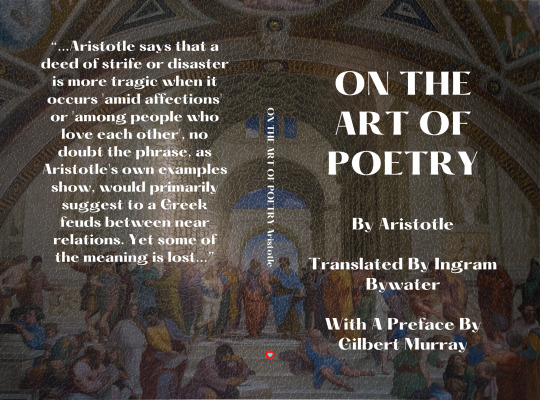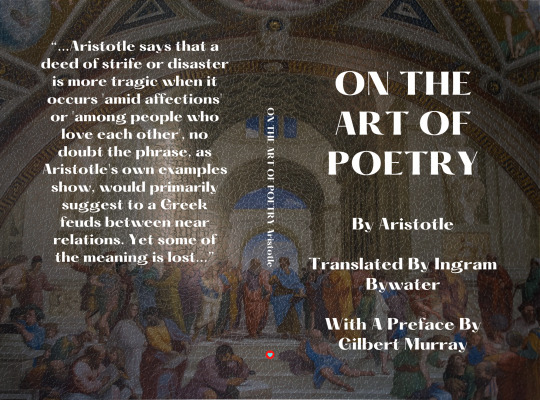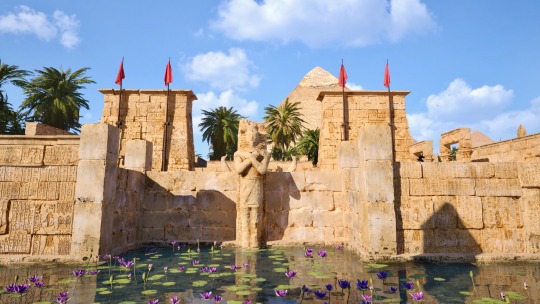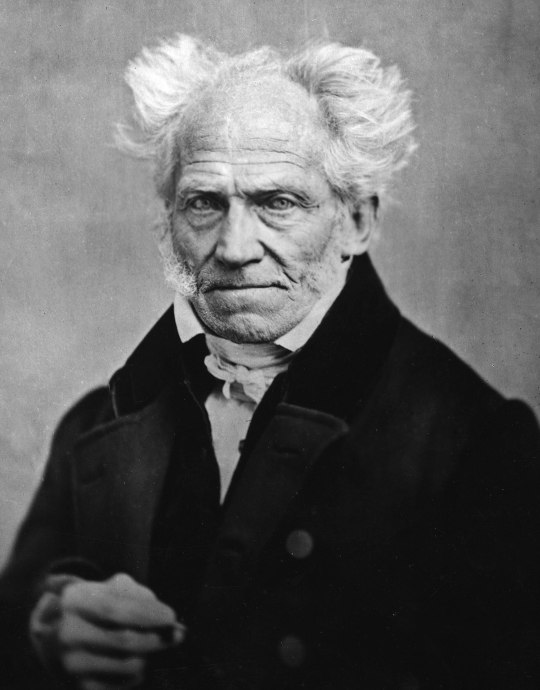#Aesthetic Principles
Explore tagged Tumblr posts
Text
The Philosophy of Wabi-Sabi
Wabi-sabi is a traditional Japanese aesthetic and worldview centered on the acceptance and appreciation of imperfection, impermanence, and the incomplete. It is deeply rooted in Buddhist teachings, particularly those relating to the transience of life. The philosophy of wabi-sabi celebrates the beauty found in simplicity, humility, and natural processes. Here’s an exploration of its core principles and concepts:
1. Impermanence (Mujō)
Transience of Life: Central to wabi-sabi is the Buddhist concept of impermanence (mujō), which acknowledges that all things are in a constant state of flux and decay. This perspective encourages an appreciation for the present moment and the beauty of fleeting experiences.
Natural Aging: Wabi-sabi finds beauty in the natural aging process. The patina of wear and the signs of use on objects are celebrated as they reveal the passage of time and the story of their existence.
2. Imperfection (Wabi)
Beauty in Flaws: Wabi-sabi embraces the idea that nothing is perfect, and it is in the imperfections that true beauty resides. This could be seen in asymmetry, roughness, and the uniqueness of handmade objects.
Simplicity and Humility: The wabi aspect emphasizes simplicity and humility. It values modest, rustic beauty over ostentatious or overly elaborate designs. This often translates to an aesthetic of minimalism and restraint.
3. Incompleteness (Sabi)
Unfinished and Evolving: The sabi aspect of wabi-sabi appreciates the incomplete and the evolving nature of things. It suggests that beauty is a process, not a fixed state, and that objects and experiences are always in a state of becoming.
Quietness and Serenity: Sabi also conveys a sense of quietness and serenity. It reflects a meditative quality, an appreciation for solitude and the tranquility found in understated beauty.
4. Connection to Nature
Natural Materials: Wabi-sabi often involves the use of natural materials that age gracefully over time, such as wood, stone, and clay. These materials reflect the organic processes of growth and decay inherent in nature.
Organic Forms: The aesthetic favors organic, irregular forms that mimic the irregularities found in nature, as opposed to geometric perfection.
5. Mindfulness and Presence
Living Mindfully: Embracing wabi-sabi encourages living mindfully and being present in the moment. It’s about appreciating the here and now, and finding contentment in the current state of things, despite (or because of) their imperfections.
Acceptance: Wabi-sabi involves accepting the natural cycle of growth and decay, and finding peace and contentment in this acceptance. It’s about letting go of the pursuit of perfection and embracing the reality of impermanence.
Examples in Practice
Tea Ceremony: The Japanese tea ceremony is a quintessential example of wabi-sabi in practice. The ceremony emphasizes simplicity, natural materials, and the appreciation of imperfections in the tea utensils, such as a crack in a teacup that adds character and history.
Kintsugi: The art of kintsugi, where broken pottery is repaired with gold or silver lacquer, highlights the philosophy of wabi-sabi. It transforms damage into beauty, celebrating the history and imperfection of the object.
Gardens: Traditional Japanese gardens often embody wabi-sabi principles with their asymmetrical layouts, natural elements, and deliberate incorporation of aged or weathered features.
The philosophy of wabi-sabi offers a profound shift in how we perceive beauty and value in the world. By embracing imperfection, impermanence, and incompleteness, wabi-sabi encourages us to find beauty in the everyday, to appreciate the simple and humble aspects of life, and to cultivate a deep connection with the natural world. It is a reminder to live mindfully, to cherish the present moment, and to find peace in the ebb and flow of life’s inevitable changes.
#philosophy#epistemology#knowledge#learning#education#chatgpt#Wabi Sabi#Japanese Philosophy#Impermanence#Imperfection#Incompleteness#Buddhist Teachings#Natural Aging#Simplicity#Humility#Organic Forms#Mindfulness#Tea Ceremony#Kintsugi#Traditional Gardens#Aesthetic Principles#Transience#Rustic Beauty#Minimalism#Cultural Philosophy
80 notes
·
View notes
Text
Delving into Poetic Wisdom: A Review of "On the Art of Poetry" by Aristotle

Aristotle's "On the Art of Poetry," translated by Ingram Bywater, stands as a seminal work in literary criticism, offering profound insights into the nature and function of poetry that continue to resonate with readers and scholars alike. Written in the 4th century BCE, this treatise serves as a comprehensive examination of the principles and techniques that underlie the creation of poetry, providing valuable guidance for poets and readers alike.
At its core, "On the Art of Poetry" is a testament to Aristotle's keen intellect and analytical prowess. In this work, Aristotle explores the various elements that contribute to the effectiveness of poetry, including plot, character, diction, and spectacle. Through his systematic analysis, Aristotle seeks to uncover the universal principles that govern the art of poetry, shedding light on its essential nature and its role in human society.
One of the most compelling aspects of "On the Art of Poetry" is Aristotle's emphasis on the importance of mimesis, or imitation, in poetry. According to Aristotle, poetry is a form of imitation that seeks to represent the actions, emotions, and experiences of human life. Through the skillful use of language and imagery, poets are able to create a vivid and lifelike portrayal of the world, inviting readers to engage with their work on a profound emotional and intellectual level.
Moreover, "On the Art of Poetry" offers valuable insights into the principles of dramatic structure and the role of catharsis in tragedy. Aristotle argues that tragedy is a form of poetry that evokes feelings of pity and fear in the audience, leading to a purgation or cleansing of these emotions. Through the depiction of the fall of a tragic hero, tragedy allows audiences to confront their own mortality and the fragility of human existence, ultimately leading to a deeper understanding of the human condition.
In addition to its exploration of tragedy, "On the Art of Poetry" also examines the principles of comedy and epic poetry, providing valuable guidance for poets working in these genres. Aristotle discusses the importance of unity of plot, character, and theme in epic poetry, as well as the role of humor and satire in comedy. Through his analysis, Aristotle highlights the diversity of poetic forms and the unique challenges and opportunities that each genre presents to the poet.
In conclusion, "On the Art of Poetry" by Aristotle is a timeless classic that continues to inspire and enlighten readers with its profound insights into the nature of poetry. Aristotle's systematic approach to literary criticism, coupled with his keen observations and analytical rigor, make this work an indispensable resource for anyone interested in the art of poetry. With its timeless wisdom and enduring relevance, "On the Art of Poetry" remains a cornerstone of literary theory and a testament to the enduring power of poetic expression.
Aristotle's "On the Art of Poetry," is available in Amazon in paperback 12.99$ and hardcover 18.99$ editions.
Number of pages: 116
Language: English
Rating: 10/10
Link of the book!
Review By: King's Cat
#Aristotle#Poetry#Literary criticism#Mimesis#Imitation#Dramatic structure#Tragedy#Catharsis#Comedy#Epic poetry#Unity of plot#Characterization#Diction#Spectacle#Poetics#Aesthetic principles#Greek literature#Philosophical discourse#Aristotle's theory#Literary analysis#Poetic form#Emotion#Human experience#Morality#Ethics#Aesthetics#Universal principles#Literary genres#Rhetoric#Imagination
3 notes
·
View notes
Text
Delving into Poetic Wisdom: A Review of "On the Art of Poetry" by Aristotle

Aristotle's "On the Art of Poetry," translated by Ingram Bywater, stands as a seminal work in literary criticism, offering profound insights into the nature and function of poetry that continue to resonate with readers and scholars alike. Written in the 4th century BCE, this treatise serves as a comprehensive examination of the principles and techniques that underlie the creation of poetry, providing valuable guidance for poets and readers alike.
At its core, "On the Art of Poetry" is a testament to Aristotle's keen intellect and analytical prowess. In this work, Aristotle explores the various elements that contribute to the effectiveness of poetry, including plot, character, diction, and spectacle. Through his systematic analysis, Aristotle seeks to uncover the universal principles that govern the art of poetry, shedding light on its essential nature and its role in human society.
One of the most compelling aspects of "On the Art of Poetry" is Aristotle's emphasis on the importance of mimesis, or imitation, in poetry. According to Aristotle, poetry is a form of imitation that seeks to represent the actions, emotions, and experiences of human life. Through the skillful use of language and imagery, poets are able to create a vivid and lifelike portrayal of the world, inviting readers to engage with their work on a profound emotional and intellectual level.
Moreover, "On the Art of Poetry" offers valuable insights into the principles of dramatic structure and the role of catharsis in tragedy. Aristotle argues that tragedy is a form of poetry that evokes feelings of pity and fear in the audience, leading to a purgation or cleansing of these emotions. Through the depiction of the fall of a tragic hero, tragedy allows audiences to confront their own mortality and the fragility of human existence, ultimately leading to a deeper understanding of the human condition.
In addition to its exploration of tragedy, "On the Art of Poetry" also examines the principles of comedy and epic poetry, providing valuable guidance for poets working in these genres. Aristotle discusses the importance of unity of plot, character, and theme in epic poetry, as well as the role of humor and satire in comedy. Through his analysis, Aristotle highlights the diversity of poetic forms and the unique challenges and opportunities that each genre presents to the poet.
In conclusion, "On the Art of Poetry" by Aristotle is a timeless classic that continues to inspire and enlighten readers with its profound insights into the nature of poetry. Aristotle's systematic approach to literary criticism, coupled with his keen observations and analytical rigor, make this work an indispensable resource for anyone interested in the art of poetry. With its timeless wisdom and enduring relevance, "On the Art of Poetry" remains a cornerstone of literary theory and a testament to the enduring power of poetic expression.
Aristotle's "On the Art of Poetry," is available in Amazon in paperback 12.99$ and hardcover 18.99$ editions.
Number of pages: 116
Language: English
Rating: 10/10
Link of the book!
Review By: King's Cat
#Dramatic structure#Tragedy#Catharsis#Comedy#Epic poetry#Unity of plot#Characterization#Diction#Spectacle#Poetics#Aesthetic principles#Greek literature#Philosophical discourse#Aristotle's theory#Literary analysis#Poetic form#Emotion#Human experience#Morality#Ethics#Aesthetics#Universal principles#Literary genres#Rhetoric#Imagination
1 note
·
View note
Text




tarpit site.
#personal#delete later#for context a tweet i made in the middle of the night blew the fuck up and brought the attention of anime fans who've been#harassing and hassling me about my big factual blunder for an entire day straight#“ok i'll apologize” “bro it's not that serious.”#“you're right it's not that serious“ ”why won't you just admit that you're wrong and apologize!“#i'm not going crazy right. i feel like i'm getting manipulated into thinking i must've been wrong#it's crazy how twitter hate will trick you into believing saying something someone else disagrees with is a moral failing#sorry i haven't seen frieren i guess but what's it to you. i wasn't making a claim or statement#also because nobody has gotten this in the original post i wasn't talking about the quality of animation i'm talking about solid drawing#which is a very specific principle of animation. dandandan has really good solid drawing wherein all the characters are animated#with realistic and proportional 3d depth. newsflash but trigger doesn't prioritize solid drawing in their animation and that's fine#it's an aesthetic choice and has ties to production limits. none of this is a big deal. this is all so stupid lol#i've dealt with worse and more annoying weebs though it's fine i'll put on my clown nose twitter needs their stupid guy for the day#oh btw at the end of the day this doesn't matter. it'll be over by tomorrow. all that's happening is petty angry emotions.#so please don't involve yourself by jumping into the argument and prolonging this shit#i'm about to go on a date with tulli after being apart for a month this is the furtherest thing from my mind rn
1K notes
·
View notes
Text

Save me yi nine sols
(You should play nine sols it’s very very fun)
#nine sols#a break from your regularly scheduled op stuff to bring you this doodle#catboy brainrot hours. yi is such a guy#absolutely obsessed with his design and animations ngl#I’m not very good at the game lmao.#but hey that’s what story mode is for!#honestly so in love with the aesthetic of the game in general…..#I have a lot of thoughts on how modernization of Chinese and other East Asian cultures in design usually just means westernization#this is why I just. on principle. have not watched legend of Korra yet#this game just combines science fiction aesthetic with Chinese design patterns so incredibly well
1K notes
·
View notes
Text

To me, the cover of Pandora Principal is like a classic terran family photo. Reminiscent of the late 20th century Sears portrait studio. Father, daughter, and the space backdrop that she chose, if you will.
#its because that is exactly around when the cover art was being made xD#in my mind though the reason for all these era specific vibes is just a broad cultural aesthetic adoption#yknow like what we do today but in the 23rd century#im obsessed nonetheless#st: tos#the pandora principle#saavik#spock#s'chn t'gai saavik#s'chn t'gai spock
23 notes
·
View notes
Text






☀️⚜️The Beauty of ttp 2 part one⚜️☀️
#pics(edits) made by me :)#assassin1513#video games#gaming#games#the talos principle#the talos principle 2#talos#talos principle 2#ttp 2#egypt#ancient egypt#egyptian#egypt aesthetic#screenshots#screenshot#game screenshots#virtual photography#pyramid#mystic#blue sky#egyptology#egypt history#history
92 notes
·
View notes
Text



#;ooc#ooc#venchu staring off the distance-#i dont have high graphics but even then u can get the vibes-#god i love p.enacony so much; it gives me such aura- the vibes are SO good; impecable#the music too; its so relaxing;; luxurious-#i think s.tar r.ail peaked so much with it; like the next part must be really REALLY good in order to top it for me#i love when 'arcs'/areas in game have these very distinctive aesthetics/vibes in the sense of;;#where u could follow the design principles and come up with something coherent that perfectly fits the place#which is what i feel like n.atlan in g.enshin kind of missed#and why a lot of the characters look completely separated from n.atlan#like you can get a feeling when u see charas like l.yney; l.ynette; f.urina; n.euvi that they come from the same time and area#they follow such a clean cohesion that even when their designs are distinguishable and different from each other ; you can get the vibe sti#which btw im always up for things that fall out of the box; bc things arent always so rigid and 'fitting'#but i dunno;; n.atlan was such an all over the place area still; that the differences didnt feel enriching and engaging#and this isnt about the usual yadayada about m.avuika's motorcycle like im done with seeing that argument#i mean the -general- lineup; including looks/personalities/kits; all#anyways whatever what do i even know#bc even if n.atlan wasnt my cup of tea; maybe to someone else its their fav region u see#like how sometimes i dont vibe with n.asu's stuff; but other people do; thats just how tastes are#;delete later#dl#i dont tend to vibe with those strict unwavering labels that sometimes people impose; sometimes they can be very restrictive creative wise#but in my experience; having a -base- root/concept can help the inmersion and meaning behind things a lot#and it becomes an overall more memorable thing#like from knowing that base; you can expand and branch out and still make it feel engaging and new and different
7 notes
·
View notes
Text




#soobin#choi soobin#txt#tomorrow x together#he is a man written by a woman#i know these are so busy and messy and not my aesthetic#but his face and fond smile towards his members is just so endearing#also#he is making me compromise on my aesthetic principles#i don't know how i feel about that...#but that's a problem for Tomorrow (lol) Me#Today's me just wants to enjoy this tall cupcake
118 notes
·
View notes
Text
overbred animals are so crazy. beauty standards for pets. what a world to live in
#literally torturing those little creatures for some arbitrary aesthetic principle#and in most cases it just kind of looks ugly too
8 notes
·
View notes
Text

From The Talos Principle 2
#neon#the talos principle#talos principle 2#the talos principle 2#game#video game#gaming#aesthetic#cyberpunk#vaporwave#dystopia#statue
36 notes
·
View notes
Text








The Talos Principle 2
#game#the talos principle#the talos principle 2#game wallpaper#screenshot game#video games#road to elysium#game aesthetic#game photography
7 notes
·
View notes
Text
born to be ✨Jessica Day✨ forced to be 🕷️Wednesday 🕷️


#new girl#jessica day#Wednesday#wednesday addams#the addams family#whosthatgirl#zooey deschanel#christina ricci#jenna ortega#winston bishop#Schmidt#Cece#nick and jess#Schmidt and cece#New girl memes#Newgirlfans#hey girl#Its jess#Twenty noine#Youths#Gotmecookiegaveyoucookie#morticia addams#gomez and morticia#goth aesthetic#Goth queen#Miss day#Miss jessica day#Jessica day vice principle#wednesday netflix#nick miller
7 notes
·
View notes
Text
“A high degree of intellect tends to make a man unsocial.”

Arthur Schopenhauer was a German philosopher. He is best known for his 1818 work The World as Will and Representation.
#Pessimism#Will and Representation#Metaphysics#Ethics#Existentialism#Philosophy of Mind#Kantianism#Aesthetics#Solipsism#Nihilism#Idealism#Compassion#Individualism#World as Illusion#Transcendental Idealism#Suffering#The Fourfold Root of the Principle of Sufficient Reason#Eastern Philosophy Influence#Art and Beauty#Critique of Hegel's Philosophy#today on tumblr#quoteoftheday
30 notes
·
View notes
Text

The Archivist by Martha Cooley
#quote#typography#martha cooley#the archivist#literature#dark academia#light academia#love#hunger#desire#on narrative#the eros principle#imagination#aesthetic#classic academia
34 notes
·
View notes
Text






A couple years ago I was asked about my opinion on Roman, no one asked for the rest since. But I decided to go, "ah hell, why not."
So I'm just gonna throw this at y'all. :,D
(Saturation of stamp indicates how strongly I feel abt the placement.)
#sanders sides#janus sanders#logan sanders#patton sanders#remus sanders#roman sanders#virgil sanders#(mod post)#web series#(remus has commandeered my brain - man)#(also i just love the dork sides aesthetics)#(also i'm prone to throwing principle of charity at all of them + acknowledging none of them are perfect~)
15 notes
·
View notes